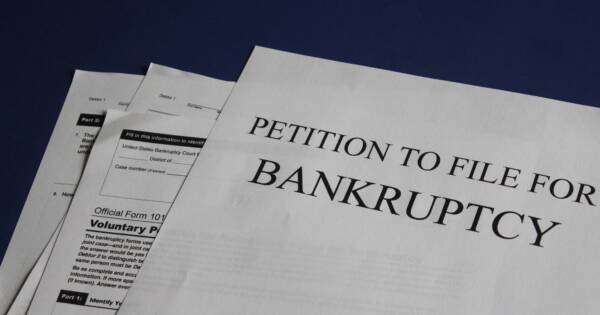When an accident caused by negligence results in an injury, it can end up in court. Know what to expect if you’re involved in a personal injury law case.
When an accident caused by negligence or malicious intent results in an injury, it can end up in court. Whether you’re the plaintiff or the defendant, it’s important to understand the basics of personal injury law and to know what to expect if you’re involved in a case.
What Is Personal Injury Law?
Personal injury law is the branch of the legal system that covers disputes that arise when an injured person seeks reparation for losses resulting from an accident caused by another person’s carelessness, negligence or intentional behaviors. Personal injury law is also known as tort law and typically falls under the umbrella of civil law.
Unlike criminal cases, personal injury law isn’t typically based on statutes or laws made by legislatures. As with many civil cases, the outcome is based on the decision of the judge or jury hearing the case. Determinations are typically made by looking at precedents, which are the decisions other judges have made in similar hearings. These binding precedents are often referred to as common law.
Types of Personal Injury Cases
Personal injury cases fall into several main categories, as covered below.
Accidents
In personal injury law, an accident is defined as an incident that results when a careless or negligent action by one party results in harm to another party. This can include automobile accidents, medical malpractice, and slip-and-fall incidents.
 Clark Van Der Beken/Unsplash
Clark Van Der Beken/UnsplashDefamation
Defamation occurs when one person makes a false statement that damages another person’s reputation or livelihood. A spoken statement is considered slander. A written statement or a statement that’s broadcasted through the media is considered libel. Examples of defamation include falsely accusing an individual of committing a crime or spreading rumors about an individual having a feared disease.
Defective Products
Individuals who have suffered harm due to a defective product may seek reparation through personal injury law. Complaints can be broken out into several categories.
- Defective design: This category includes products in which the design is inherently dangerous. Examples of defective design include items designed for small children or pets that present a choking hazard or automobiles that are prone to flipping over.
- Defective manufacturing: Manufacturing defects are created by mistakes in the manufacturing process. This category may include accidentally tainted food or items with missing or broken parts.
- Failure-to-warn claims: These claims occur when a company or an individual fails to provide an adequate product warning or instructions for proper use and it results in an injury to the consumer.
Intentional Acts
Personal injury law also covers intentional acts, which are defined as situations where a deliberate action on the part of one individual causes harm to another individual. Assault and battery is a common example of an intentional act.
How Does a Personal Injury Lawsuit Work?
Personal injury lawsuits have several phases, and each of these has a specific purpose. Understanding what each phase entails helps ensure you know what to expect and can prepare.
Filing a Complaint
A personal injury lawsuit formally begins when the injured party, known as the plaintiff, files a civil complaint alleging that they have been harmed by an incident or accident caused by another party’s careless, negligent or deliberate actions. The party the complaint is filed against becomes the defendant, which may be an individual, a company or a government agency.
The statute of limitations Define: Statute of Limitations The legally permitted maximum amount of time between the occurrence of an accident and the filing a suit. is typically determined on a state-by-state basis. In some states, this can be as little as one year.
Once the complaint has been filed, the defendant is served. Essentially, this means that the defendant is presented with the details of the complaint and notified of the court date.
Discovery
During discovery, lawyers on both sides of the case gather facts to support their positions. Information is exchanged through documents, written questions or depositions, where questions are asked in person and answers are given under oath. A lawyer from the relevant insurance company may also participate in discovery.
 Mateus Campos Felipe/Unsplash
Mateus Campos Felipe/UnsplashResolution
There are three main ways that personal injury suits are resolved.
Informal Settlement
Many personal disputes are resolved through out-of-court settlements. This typically happens after a period of negotiation, which includes the parties who are personally involved, their attorneys and representatives from the companies who insure them. The settlement includes a written agreement, in which both sides forgo further action upon the exchange of an agreed-upon sum of money.
Alternative Dispute Resolution
Parties who wish to collaborate on the outcome of a personal injury case may engage in alternative dispute resolution. Because ADR isn’t typically adversarial in nature, it can save time, be more cost-effective and less stressful, and allow parties to entertain creative solutions that may not be possible through a formal court case.
Formal Lawsuit
If a settlement can’t be reached, parties may proceed to a formal lawsuit in a civil court. The case is presented in front of a judge and/or jury, who ultimately issue a verdict in favor of either the plaintiff or the defendant. Only a small percentage of personal injury cases actually go to trial.
A jury trial typically consists of several steps:
- Jury selection
- Opening statements
- Witness testimony and cross-examination
- Closing arguments
- Jury Instruction
- Jury deliberation
- Verdict
The Award
If the judge or jury finds in favor of the plaintiff, damages are awarded and may include monetary compensation for the following:
- Medical bills or other expenses related to the injury
- Lost wages, including anticipated future lost wages
- Physical pain and suffering caused by the incident or accident
- Disability or physical disfigurement
- Punitive damages in cases of malicious intent
Seeking Legal Help
Whether you’re seeking damages related to an injury or you’ve been named as a defendant in a complaint, you may benefit from legal assistance. Although it’s possible to forgo a lawyer in personal injury cases, a legal professional can help you understand the road ahead and guide you through the process.






